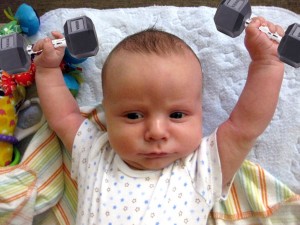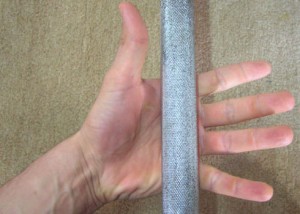Its common place to hear talk about how much you can squat or bench. These are important strength lifts, but the pull up measures your strength to weight ratio better than almost any other exercise. You don’t often hear ‘how many pull ups can you do?’
One reason for this is because there is very few people that can actually do pull ups for ‘reps’. And as is common, many who aren’t good at this movement will avoid it and focus on the moves that they’re better at.
Now, Dan Kennedy, a favorite author of mine, suggests that we shouldn’t focus on our weaknesses, we should focus on our strengths and unique abilities. While I truly believe this to be the case in ALL other aspects of life, the gym is NOT the place to put this axiom into practice. It’s laughable to go to a gym and see who’s following Dan Kennedy’s advice: those guys with amazing upper bodies that are supported by scrawny chicken legs for example.
Aside for the aesthetic reasons for training strengths hard and weaknesses harder, there are the health related issues. For a balanced physique and injury avoidance, training all muscle groups is a no-brainer…
So for all of you out there that aren’t convinced that pull ups should be as important part of your training regimen as the bench press or squat, listen up. Here are some tips to improving your pull up so that you can include them in your workout in public (you may want to start in your basement to avoid embarrassment.)
1. Form, form, form
If your squat were getting funky would you keep squatting? Unlikely. Yet it amazes me to see how people go to any lengths to pull their body up to the bar. Injury can occur as easily with this exercise as with any. It involves multi-joints, including the potentially unstable shoulder joint.
So, if you can do pull ups for reps, make them clean reps and stop when your form starts to fall apart.
2. Work your back
In my experience, it’s difficult for people to learn how to engage the muscles required to do the pull up. More often than not, people will try to use the arms, specifically the biceps to do the work. Your biceps aren’t designed to work this way, especially on a pull up, or palm facing away from the body position. The biceps can be engaged more readily in the chin up (palms facing face) position. In any case, the lats are the muscles that are the work horse.
Start the pull up with the scapula retracted, or as if you’re squeezing a pencil between the shoulder blades. You can get an inch or two lift just be doing scapular retraction. The elbows shouldn’t be totally locked out either. Have an ever so slight bend at the elbow. By not going to a full hang with locked elbows and shoulders lifted up to the ears, you put a lot of stress on tendons that can later become angry (trust me, my elbows and I aren’t on speaking terms at the moment-this is a mistake I learned the hard way).
3. Lose the flub
Yep, I said it. This is a movement that you’re not going to benefit one bit from an extra bit of chub hanging around. That seems obvious enough. Ask a power lifter or a line backer and they’ll tell you that a little flub actually ups their game, not in the game of pull ups. I’m putting up posts with HIIT (high intensity interval training) cardio workouts in them to help you with this. HIIT improves cardiovascular strength and endurance while it’s the most effective way to get leaner. Being leaner means less weight to move, less weight to move means the potential to do more pull up reps, simple as that.
4. Change your grip
One of the best things about pull ups is the variety of ways you can do them. You can constantly change your grip from shoulder width, to narrow grip, palms facing each other or parallel. Every workout you do can be different just by changing up the grip. It helps with overuse injuries as well as you’ll put stress on different areas of the shoulder/back as well as the elbow/arm.
5. Change your rep scheme
Would you always go for a one-rep max on the bench? Not likely. How about other lifts? Do you always do the same rep range? Well, if you do, you should stop it and change up your rep scheme. The pull up is no different. Especially if you’re just mastering the pull up, don’t go to failure and beyond on every set. Some days you’ll want to build strength with a lower rep range in between 2-5, (perhaps using a weighted vest). Other days you may want to do body weight sets of 5-12. Then on other days you’ll want to build endurance by doing assisted pull ups in the range of 12-20. Of course, you may have to resort to assisted pull ups on any of the sets in any of the rep ranges. But the idea is that you may provide more or less assistance based on the total number of reps you’re looking to get in each set.
What tips do you have to add to this list? Do tell!









